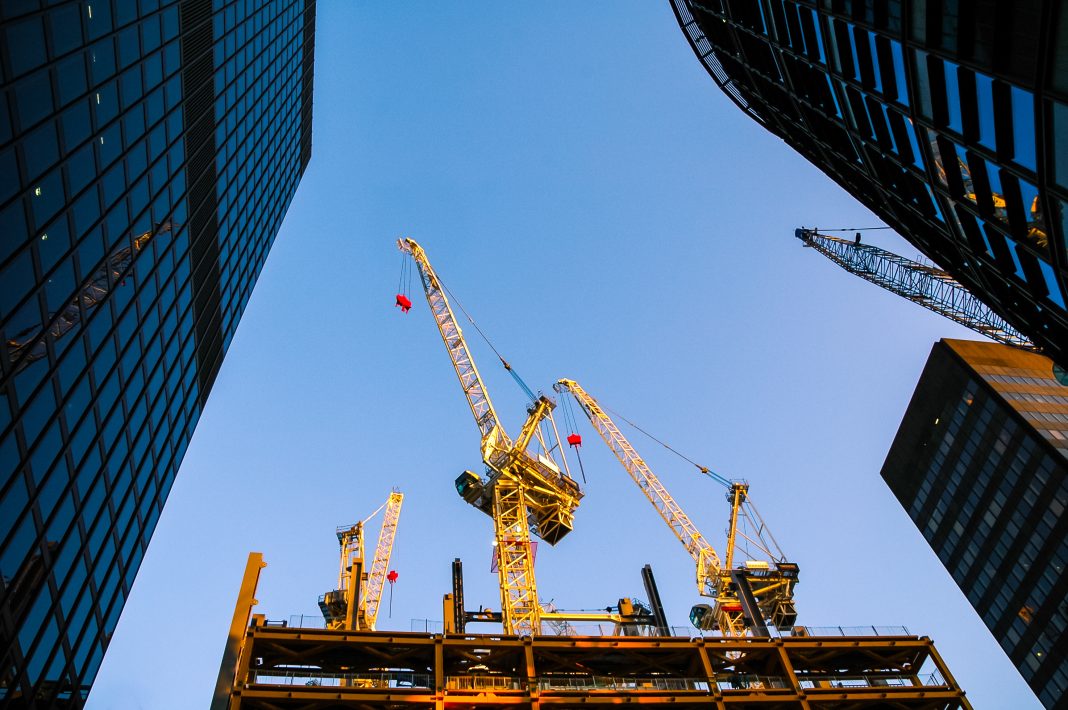The volume of new builds and office refurbishment schemes is up by nearly 80%, with development in the West End continuing to rise
Office refurbishment schemes are at an all-time high as developers race to meet the anticipated Minimum Energy Efficiency Standard (MEES) regulations to achieve Energy Performance Certificate (EPC) B rating by 2030, according to Deloitte’s London Office Crane Survey.
Delays in completion and a drive to achieve energy efficiency have led to the highest volume of office refurbishment schemes since Deloitte’s records began in 2005.
EPC requirements are increasingly driving development
Responses in the survey showed that the majority of developers believed they will hit required net zero targets between now and 2030.
Philip Parnell, real estate valuation lead at Deloitte, said: “At a time when many of the traditional drivers of development activity such as capital value growth are lacking, a combination of positive ESG-related opportunities and downside stranding risks associated with physical obsolescence and accelerated value erosion, means there is strong stimulus for renewal.”
The industry expects government to tighten MEES regulations in the coming months to shore up net zero timelines, leading to a hurried response to ensure that buildings achieve a minimum of EPC B by 2030.
New office starts have risen by 80% and projects are getting larger
The UK’s capital has seen a record volume of office refurbishment scheme starts, according to Deloitte’s survey.
New office starts have also risen by almost 80%, when compared to the Winter 2022 survey.
Volume is now at 4.4m sq. ft. and new construction is starting across 50 schemes. The size of new developments has also increased, with the average new scheme size rising to by nearly 10,000 sq. ft. to around 88,000 sq. ft.
The West End has continued in prime position for occupier focus, with the second consecutive rise in volume to 1.3m sq. ft., as opposed to the steady decline observed in the City.
Margaret Doyle, chief insights officer for financial services and real estate at Deloitte, said: “Following pandemic-induced home working mandates, many businesses are now encouraging office attendance more proactively and are considering how to attract employees back to the office.
“Tenants’ shift toward quality over quantity has led to desire for attractive, sustainable, well-kitted out space, close to transport hubs and amenities. We expect that the need to bring offices up to scratch – especially in terms of energy efficiency – will drive London’s development for the rest of the decade.”
Supply chain and skills shortages have delayed several office refurbishment schemes
Estimated completion dates have been pushed back to the latter half of 2023 by 22 schemes, covering 3.6m sq. ft. of development.
This pushes the projected completions in 2023 to over 10m sq. ft., contributing to the year’s high rate of activity.
Supply chain issues leading to increased costs and the skills shortage were identified by respondees to Deloitte’s latest CFO Survey as partially responsible for the delays- project costs have remained elevated, for instance.
However, respondees expect this to improve over time, with a marginal improvement over the next 12 months and the elimination of significant or severe recruitment difficulties in two years’ time.
The London market appears “cautiously optimistic”
Sophie Allan, director in real assets advisory at Deloitte, said: “Developers seem to be cautiously optimistic about the future of London’s development pipeline. Positive signs include a huge increase in the volume of new starts compared to the previous survey, and the highest volume of refurbishment starts on record, as developers race to avoid obsolescence.
“New infrastructure and expanding transport links have attracted people to previously overlooked areas like mid-town and the eastern fringes of the City. This is undoubtedly a vote of confidence in London after the intense disruption of the pandemic, disturbance to supply chains and rising inflation experienced over the past year.”
Read the survey results and other findings here.
There are multiple tools for calculating the energy efficiency of a development- Kingspan’s U-Value calculator can help you determine how insulation thickness can impact the overall thermal perfomance of your building.














